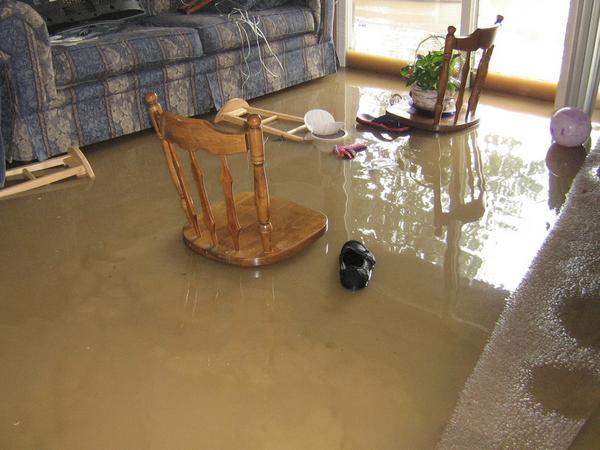Almost everyone will have their own perception in relation to How to Repair and Prevent Bathroom Water Damage.

The washroom is very susceptible for wet build-up as well as potential water damage due to the constant use water in it. This short article offers simple examination methods to assist detecting water damages dangers.
The regular use of water in the restroom makes it incredibly at risk for wet build-up and possible water damage. By inspecting it consistently, you can minimize water related problems.
The complying with set of examinations is simple to execute and must be done once in every three months in order to maintain your bathroom healthy and also to prevent prospective water damages triggered by the bath tub, the shower, pipe joints and also plumbing, sinks, cabinets, as well as the commode
Do not overlook doing these inspections and be complete while performing them. Keep in mind that these basic examinations can save you a lot of cash by supplying very early indications for water damage
Sinks as well as Cabinets
Sinks and also cabinets are exposed to wetness and also moisture daily and are commonly forgotten. Inspect routinely under the sink as well as on the kitchen counter over it. Repair any drip in the trap as it might recommend drainpipe troubles. Look around the sink, slow draining pipes may suggest an obstructed drainpipe. Change sink seals if they are cracked or loose.
Bathtub and Shower
The shower as well as tub need unique focus and also upkeep. Check the tiles and replace if broken. Ensure that there is no missing grout between the ceramic tiles. Check as well as change split caulking at joints where the walls meet the floor or the bath tub. Obstructed drains pipes as well as pipes issues will certainly stop the bath tub from drying out and also may indicate serious problems beneath the bathtub. Speak with a professional quickly to prevent structural damage. Focus on stainings or soft locations around the bath tub walls as they may indicate an interior leakage.
Plumbing
Signs for water damages are tough to identify since most pipes are installed inside the walls.
Pay special interest to flooring as well as wall surfaces wetness and also discolorations as they might show an unseen plumbing problem. Check moisture levels in adjoining rooms as well.
The Toilet
The toilet is a vulnerable water junction. Check the water lines and search for leaks around the toilet seat, in the hose, and also under the water container. If you find any type of indications of moisture on the floor around the commode, look for leaks in the toilet rim and container seals.
Know that hanging bathroom bowl deodorants raises the chances for clogs.
Water Damage Signs In The Bathroom To Avoid Cleanup
Musty smell
This is one of the easiest signs to catch because musty smells are so odorous. The damp, earthy, moldy smell should be a big red flag. The smell will develop when moisture gets trapped in surfaces, and begins to facilitate mold growth. Leaking pipes under cabinets, inside walls, and behind shower fixtures will cause moisture to stay trapped and not dry, which will lead to mold growth and spread. As soon as you notice any musty smells in your bathroom, have it checked for hidden water damage and cleanup signs.
Visible mold
If the smell isn’t there to give it away, sometimes you will actually see mold growth. Finding mold in your bathroom is a serious problem, because mold is very harmful to your health. By the time mold growth is visible, it also means that water damage has already occurred and been present for some time. The only way the mold problem can be resolved is to find the source of the moisture and get it stopped. To safely and adequately remove mold, you need to have professionals handle the remediation. Do not waste any time in getting mold problems addressed, fixed, and sanitized so that you can protect you and your family from the many respiratory symptoms caused by mold exposure.
Damaged floors
Bathroom floors should be able to withstand some exposure to water while still remaining in good condition. However, when excess exposure or water leaks occur, they will begin to damage even the most water-resistant flooring. If you notice any cracking, bubbling, staining, or warping on your bathroom floors, there is probably a water leak somewhere causing the distortion. If you notice areas of the floor have become softer, or even have a spongy feeling, there is probably damage to the subfloor. Subflooring is typically made up of plywood. When plywood is exposed to water or moisture, it will absorb it. Once it has become saturated, the weight of the excess water will cause the wood to swell and soften. Check the floors in your bathroom frequently to catch any of these sings before they lead to damaged subflooring.
Changes on walls
When water leaks behind walls, it will cause changes in the drywall. Peeling plaster, blistering paint, and soggy wallpaper are all good indicators that excess water is building up behind the wall. Water leaking behind drywall will cause it to swell and be soft to the tough. If you start to notice gaps along the trim of your walls, or where tile meets the wall, it could also be a strong indicator that there is a leak behind the wall. Any changes, distortion, or damage on the walls should be evaluated as soon as you notice it to prevent further water damage and cleanup.

I'm certainly very serious about Looking for Signs of Water Damage in the Bathroom and I really hope you liked the entire blog post. Are you aware of somebody else who is excited by How to Fix a Water Damage Bathroom? Why not promote it. We enjoy reading our article about How to Prevent Bathroom Water Damage.
Course Detail